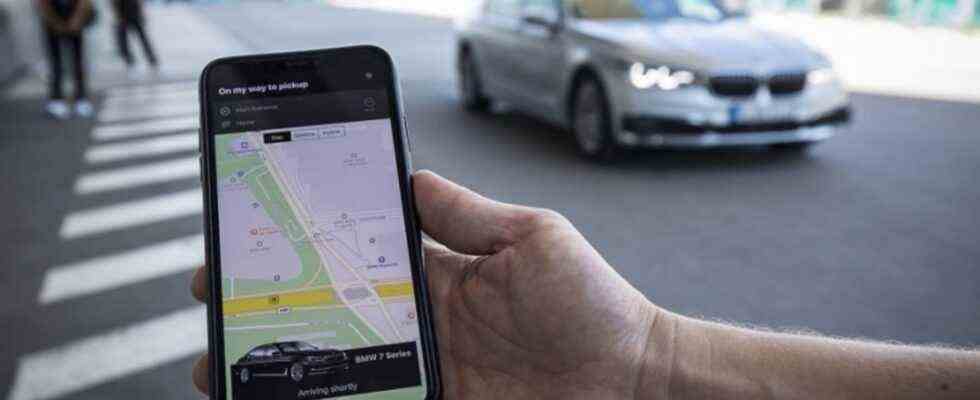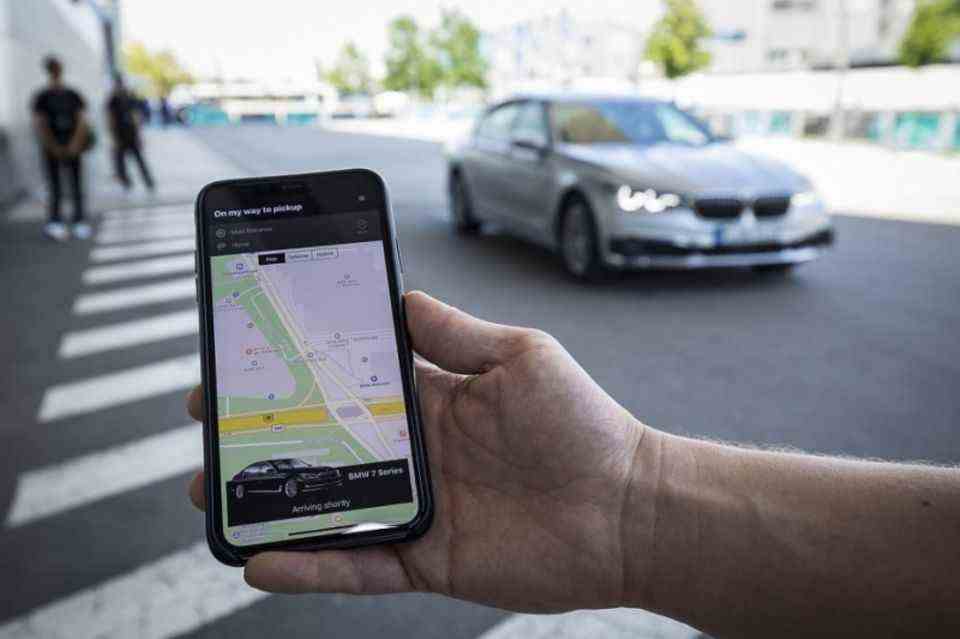Robo-taxis put public transport under pressure
People mover instead of S-Bahn?
The first autonomous cars will mainly be taxis
© press-inform – the press office
The first cars should be driving autonomously in the middle of the decade. It is then only a small step to the robo-taxis. According to a study by the management consultancy McKinsey, this is positive for commuters, as the costs of using public transport will fall. Another transport industry, on the other hand, will lose customers.
Every commuter knows the unintended sense of community that comes with a trip on public transport. First you stand with many others on more or less well-kept platforms, your legs in the stomach, because the train is not coming. In winter, an encouraging cold wind whistles around your nose and later, in the overcrowded S-Bahn, you can smell the sauces on the strategist’s breakfast burger, who turns up his beats so loud that you can hear every guitar riff despite his headphones as clearly as if you were standing directly in front of the stage in the group.
This very special socialization has been part of the daily routine of millions of people for decades. And that twice. On the way home, the procedure was repeated, only now the canteen food blows in your face, garnished with aromas of the cigarette break. But in a few years, according to a study by the management consultancy McKinsey, this routine will be a thing of the past. The analysts assume that the first robo-taxis will be on the streets from the middle of the decade and that they will be the cheapest mobility option in cities from 2030. This is the result of the evaluation of the study, for which data from more than 2,800 cities in 110 countries were used and 75 decision-makers from industry were interviewed.
“The robotaxi revolution is picking up speed again. Technology companies in particular are now investing heavily in autonomous driving again,” explains McKinsey expert Kersten Heineke. This has overcome the reluctance of the industry, which paused or postponed projects during the Covid 19 pandemic, and we are entering the age of autonomous driving at full speed. According to the McKinsey study, more than 30 billion euros in external investments flowed into this technology in 2020 and 2021. The majority of the top managers surveyed assume that level 4 autonomous driving will be available in private cars as early as 2024/2025 on sections of motorway that have been mapped very precisely and in simple weather conditions. With level 4 autonomous driving, the driver still has to be able to intervene; with level 5, the robo-car acts autonomously at all times and everywhere.
Car manufacturers are also promoting self-driving cars out of sheer self-interest. The introduction of this technology opens up new business models, including in passenger transport. Somehow you have to recoup the billions invested. Against this background, it also makes sense that industry experts assume that a large number of robo-taxis will hit the streets from 2026 onwards. “Especially with robo-taxis, we will see massive progress in the second half of the 1920s – the costs will fall by half between 2025 and 2030,” explains Kersten Heineke and adds: “Robo-taxis will primarily replace conventional taxis and the private car. Public transport is only minimally cannibalized here. Larger vehicles such as robo-shuttles with at least six seats have the potential to complete public transport. Only with buses and trams can there be a certain amount of cannibalization.”
According to the McKinsey study, this has a direct impact on public transport travel costs. The experts from the management consultancy assume that the introduction of these self-driving vehicles will make mobility significantly cheaper for users from 2030 onwards than it is today. Shared robo-taxis in cities could then be up to 40 percent cheaper per kilometer driven than driving a private car. This would put these autonomous people movers at the same price level as local public transport. Even a single-passenger robo-cab would be just 20 percent more expensive than driving a private car, and would cost about half that of traditional taxis or ride-hailing services like Uber.
This concept is well received by the public transport mouthpiece. “With autonomous driving, new mobility offers can be created where they are still missing or are not economically viable. Be it as a demand-driven offer in rural areas or as a feeder in regular service in suburban areas,” says Martin Schmitz, Managing Director of Technology at the association German transport company e. V. (VDV). Initial attempts with such people movers are already underway in several cities.


